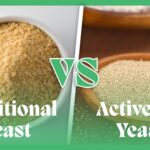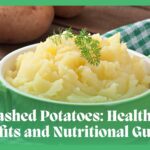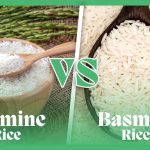In the realm of nutrition, we are witnessing a subtle green revolution occurring right in front of our eyes- it’s the young shoots growing from seeds, grains, and beans. Today we leave aside the traditional lentils and add sprouted lentils into our salad bowls!
Yes, you read that right. Prepare to be amazed by the rich taste and endless nutritional benefits these lentil sprout-lings provide. Join us on a journey to the world of sprouted lentils and unlock the various nutritional mysteries this culinary innovation offers.
What are sprouted lentils?
In the world of nutrition, sprouting lentils steal the spotlight in salads, sandwiches, wraps, and Buddha bowls. They are the lentils that have been soaked in water and let in the sun for a few days to germinate. Chickpeas, alfalfas, and mung beans are some legumes suitable for sprouting and can be consumed raw and cooked.
Aside from their crunchy and slightly nutty flavor, they have high protein content, low calories, and high levels of essential micronutrients like folate and vitamin C that offer a wide range of health benefits. Some of the most common sprouts are:
Bean and pea sprouts: These include lentils, adzuki, soybeans, mung beans, black and kidney beans, and green peas.
Sprouted grains: Sprouted grains are brown rice, buckwheat, quinoa, and oats.
Vegetable sprouts: These sprouts include radish, broccoli, beet, mustard green, and clover.
Nut and seed sprouts: Almonds, radish seeds, alfalfa seeds, pumpkin seeds, sesame seeds, and sunflower seeds are some of the sprouts in this category.

History:
Sprouting is a timeless tradition that goes back thousands of years! To understand its history, you might want to revisit more than 5000 years ago. It all started in ancient China, where sailors were out of food while sailing towards the Yangtze River, and the only food available was the dried beans that began to sprout after being in the moisture.
The sailors had no choice but to rely on the sprouted beans but realized they tasted good and gave them energy after consuming. Sprouting lentils gained popularity from there, and in 1282 B.C., the Emperor of China Shen-Nung claimed he was excellent at growing mung beans.
After a few years, Chinese physicians started prescribing them to patients for medicinal purposes. Sprouting of seeds and grains became a huge part of Eastern cuisines, however, took much longer time to reach the Western culture. They soon played a pivotal role in treating medical and nutritional conditions.
In the 1770s, Scurvy, a disease caused by extreme deficiency of Vitamin C, spread widely among the Sailors. Captain James Cook was looking for a cure for his sailors when he started giving them sprouts to prevent their Vitamin C deficiency and keep them healthy.
Today, sprouting is a worldwide trend and is available everywhere as alfalfa green, clover, mung bean, broccoli, and wheat sprouts. The sprouting process produces extra vitamins and the healthy enzymes found in sprouts help digestion.
How to sprout lentils:
Sprouting lentils at home is an easy, cheap, and great way to incorporate extra ingredients into your everyday diet. Gather around, it’s sprouting time!
All you need is a jar, some lentils, water, and a mesh cloth. Fill the jar with water, add your preferred amount of lentils, and keep overnight. The next day, drain the water, wash the lentils, and leave them in the jar to sprout.
Two things that you need to keep in mind for successful sprouting are, first, you don’t want them immersed in water, and second, you want good air circulation. For that purpose, tie a mesh cloth on the jar and keep it upside down to drain the extra water. You can keep the jar in a sunny spot, but it is not necessary, as seeds usually germinate under the soil and don’t need a lot of sunlight.
Rinse your lentils at least twice a day and keep draining them. You will start to see tiny tails emerging from lentils just after one day, and after about three to four days; the tails will grow to four times the size. After sprouting is completed, they can be stored in the refrigerator for up to a week. They are usually eaten raw but can also be slightly cooked before consuming.

Nutritional composition:
According to USDA, 100 grams of lentil greens are low calorie and provide only 106 kcal and 22.1 g of carbohydrates. They are a high protein delight and incorporate 8.96 g, with only 0.55 g of total fat.
Lentil sprouts are the hub of all essential micronutrients providing calcium, phosphorus, potassium, magnesium, vitamin C, B-complex, and folate.
| Nutrients (100 g) | Amount |
|---|---|
| Macronutrients | |
| Water | 67.3 g |
| Energy | 106 kcal |
| Proteins | 8.96 g |
| Total fats | 0.55 g |
| Carbohydrates | 22.1 g |
| Micronutrients | |
| Minerals | |
| Calcium | 25 mg |
| Iron | 3.21 mg |
| Magnesium | 37 mg |
| Phosphorus | 173 mg |
| Potassium | 322 mg |
| Sodium | 11 mg |
| Zinc | 1.51 mg |
| Copper | 0.352 mg |
| Manganese | 0.506 mg |
| Selenium | 0.6 µg |
| Vitamins | |
| Vitamin A | 45 IU |
| Vitamin C | 16.5 mg |
| Thiamin | 0.228 mg |
| Riboflavin | 0.128 mg |
| Niacin | 1.13 mg |
| Pantothenic acid | 0.578 mg |
| Vitamin B6 | 0.19 mg |
| Folate | 100 µg |
Role in human nutrition:
The amounts of benefits sprouted lentils provide are immense. Let’s discuss some of its main health benefits:
They are nutrient-rich:
Sprouts are low in calories but high in essential nutrients. Sprouting increases the nutrient composition and quality of the lentils which makes them rich in proteins, magnesium, folate, phosphorus, vitamin C, and vitamin K.
A study suggested that lentil sprouting increases the protein, amino acids, fiber, and ash content, whereas decreases the oil content and anti-nutritional factors such as tannins and phytic acid. Along with that, sprouting also enhances the phenolic content and increases the antioxidant activity of the lentils (1).
Improve antioxidant activity:
Sprouted lentils are a rich source of antioxidants and help fight against free radicals. Free radicals are unstable atoms with an unpaired electron in their outer shell that damage the DNA and cause aging and illness.
Antioxidants are stable molecules that donate their electron to unstable free radicals to neutralize them and reduce their damage. Sprouting enhances the vitamin C levels and phenolic acid contents by up to 8.5% of the lentils that act as antioxidants and reduce the free radical activity (2).
Another study also worked on the effect of sprouting on phenol acid contents, flavonoids, and antioxidant activity and concluded that sprouting increases the total phenol content, flavonoid content, and antioxidant activity in the seeds (3).
Help maintain blood sugar level:
Sprouting helps control the blood sugar level and improves insulin sensitivity. This may be because sprouting reduces the total carbohydrate content in the lentils or due to the increased activity of the amylase enzyme, which helps break down the carbs.
This can be proved by a study where type 2 diabetes patients consumed 60 g of lentil sprouts daily for eight weeks, and the results showed a reduction in blood glucose levels, lipid profile, and coronary heart diseases (4). Similarly, in an in vitro study, sprouted lentils improved starch content and glycemic index (5).
Better heart health:
Adding lentil sprouts into your diet may prevent you from cardiovascular disorders. Sprouts help reduce total blood cholesterol and high blood pressure, increase the HDL (good cholesterol), and decrease the LDL (bad cholesterol).
One of the major factors of cardiovascular complications, lentil sprouts has been studied exclusively in terms of reducing hypertension. The study concluded that sprouts not only reduce the hypertensive activity but also improve the antioxidant activity (6).
Similarly, another study worked on the effect of lentil sprouts on serum HDL and LDL and found that consuming 60 g of sprouted lentils improves HDL levels and lessens triglyceride and LDL levels (7).
Improve digestion:
Sprouting boosts the amount of fiber in the lentils which improves digestion and keeps a healthy gut.
A study conducted showed that sprouting significantly increases the fiber content, with low fiber content on the first day of sprouting and the highest content on the sixth day of sprouting (1).
Another study where the nutrient composition of lentil sprouts flour bread was analyzed showed a 5% concentration of lentil bread raised the fiber content by double (8).
Fiber helps improve digestion by slowing digestion for maximum nutrient absorption and provides bulk to stool.
Side effects:
Lentil sprouts don’t come with a ton of side effects. However, consuming sprouts may sometimes lead to food poisoning. The details are discussed ahead:
Food poisoning:
Although rare, consuming raw or lightly cooked sprouts may lead to food poisoning due to E. coli or salmonella growth. Since these microorganisms thrive in moist conditions, the chances of the growth of these microorganisms may increase.
Food poisoning symptoms although non-fatal, may show up 12-72 hours after ingesting the microbes-borne lentils. Children, pregnant and lactating women, the elderly, and those with weakened immune systems need more attention.
How to include sprouts in your diet:
Sprouts can be included in diet in a variety of ways:
- Eat them raw
- Add to your favorite sandwich recipes, salads, and soups
- Add to meals like rice, stir-fries, omelets
- Eat as a side with dishes
- Blend the sprouts into pancake mixes
- Grind the sprouts into a paste and spread on bread or crackers.
Lentil greens are not only delicious but also nutritious. Their nutrient profile renders them a nutritional powerhouse crucial for a balanced diet. Loaded with extra nutrients and enzymes they contribute to a variety of health benefits such as nutrient absorption, better digestion, and prevention against chronic diseases. Their addition to food not only enhances the taste but opens the door to a myriad of health benefits.
References:
- https://doi.org/10.17306/J.AFS.2015.3.25
- https://doi.org/10.1111/ijfs.12489
- https://doi.org/10.1016/j.foodchem.2013.07.064
- http://ijem.sbmu.ac.ir/browse.php?a_i
- http://dx.doi.org/10.1016/j.foodchem.2012.09.122
- https://doi.org/10.1007/s11130-015-0508-3
- https://doi.org/10.15171/hpp.2015.026
- https://doi.org/10.1007/s13197-019-04215-5








